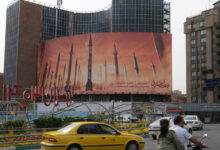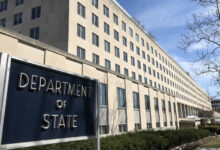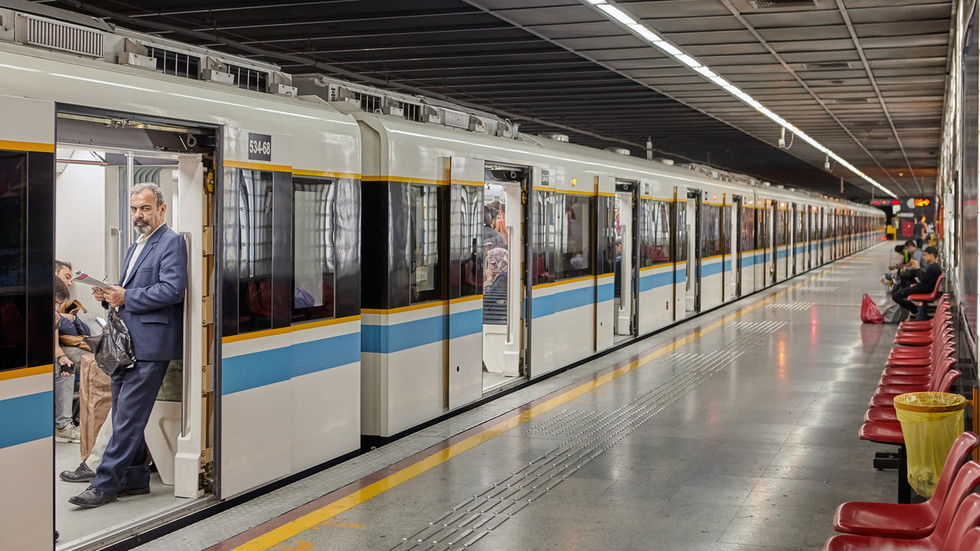
As Beijing helps revamp the Iranian capital’s metro system, a bigger picture of counter-hegemony takes shape

By Bradley Blankenship, an American journalist, columnist and political commentator
By Bradley Blankenship, an American journalist, columnist and political commentator
@BradBlank_
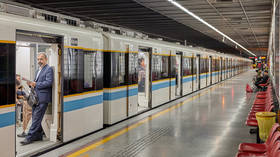
© Getty Images/Grigorev_Vladimir
Last week, Masoud Dorosti, the managing director of Tehran’s bustling metro system, dropped a bombshell: After seven years of intense negotiations, the Iranian capital is gearing up to welcome a whopping 791 sleek metro trains from China. It’s a move set to transform the city’s transit scene, injecting new life into a system that hasn’t seen a serious upgrade in half a decade.
But that’s not all. Tehran’s mayor, Alireza Zakani, threw in another ace from his sleeve last month, unveiling a flurry of contracts inked with Chinese giants aimed at giving the city’s infrastructure a serious facelift. From major transportation projects to ambitious construction ventures, China’s fingerprints may soon be all over Tehran’s urban landscape. Heck, they’re even rolling up their sleeves to erect housing units in this sprawling metropolis of nearly 9 million souls.
For anyone who’s ever wandered the bustling streets of China’s megacities, the thought of Tehran sporting a metro system rivaling any of China’s tier-one cities isn’t just a pipe dream; it’s a tantalizing glimpse into the future. With its sleek trains zipping through immaculate stations, China’s urban rail network sets the gold standard for public transportation worldwide. Could Tehran, a city boxed in by international sanctions, really outshine the likes of New York City’s aging subway system?
Well, that wouldn’t actually be that hard – but it’s worth rewinding a bit.
This metro makeover isn’t just a spur-of-the-moment fling; it’s part of a grand strategic partnership inked back in 2016 between Iran and China, and later bolstered in 2021 with a 25-year plan. With a target of $600 billion in annual bilateral trade by 2026, an increasing amount of which is done in the Chinese national currency, this pact isn’t just about shiny new trains – it’s about forging a bond that runs deep, touching on everything from trade and economics to transportation and beyond.
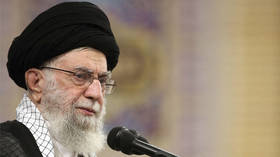
Read more
At its core, the China-Iran partnership is a symphony of economic, political, and military notes, echoing across the Middle East and beyond. While the US grapples with its own internal squabbles, Beijing and Tehran are busy cozying up, flexing their muscles, and throwing down the gauntlet to Western hegemony in the region.
Economically, this partnership is a match made in heaven. China’s insatiable hunger for energy dovetails perfectly with Iran’s vast oil and gas reserves, while Tehran sees Beijing as a lifeline amid mounting economic pressures and diplomatic isolation. With Western sanctions breathing down its neck, Iran’s embrace of China isn’t just strategic – it’s survival instinct.
Beyond economic ties, the China-Iran partnership holds significant geopolitical implications, challenging the traditional hegemony of Western powers in the Middle East. As China expands its presence in the region through ambitious infrastructure projects and strategic investments, it seeks to carve out a greater role in shaping regional dynamics, countering Western influence, and advancing its own strategic interests.
By aligning with Beijing, Tehran aims to enhance its strategic autonomy, diversify its diplomatic and economic partnerships, and bolster its leverage on the global stage, presenting a united front against Western pressure and isolation.
However, the burgeoning China-Iran alliance is not without its challenges and complexities. As Beijing deepens its engagement with Tehran, it risks alienating key regional players and drawing the ire of Western powers wary of China’s expanding influence.
The stakes are high, with Beijing’s expanding influence drawing scrutiny and skepticism from all corners.
Yet, within Iran itself, the path forward is anything but smooth. There is domestic dissent, with voices like Ahmad Khorram, a former minister under President Mohammad Khatami, decrying Beijing’s encroachment on local turf as an affront to Iran’s engineering prowess. And while trade figures paint a rosy picture, with a paltry $12.5 billion exchanged last year compared to the lofty $600 billion goal, tensions simmer beneath the surface.
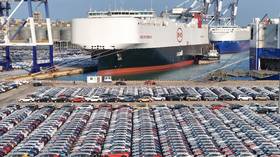
Read more
Troubles don’t end there. Recent squabbles over oil prices and diplomatic jousting in the Red Sea hint at deeper fissures within this budding alliance. But amidst the turbulence, one thing remains clear: The stakes are too high to ignore. Zooming out, the geopolitical chessboard takes shape, with China and Iran’s strategic gambit reshaping the regional landscape. A 25-year deal signed in 2021 sets the stage for a bold new era of cooperation, with Beijing’s vision for regional security and stability taking center stage.
But not everyone’s on board. Traditional adversaries such as Saudi Arabia and the Gulf States eye this burgeoning alliance cautiously, wary of the shifting tides in Middle Eastern politics. Yet, even amid lingering tensions, glimmers of hope emerge, with China’s role as a mediator facilitating a thaw in Saudi-Iranian relations last year.
And then there’s the elephant in the room – the US and its band of allies, forever casting a shadow over regional affairs. As China lends a helping hand in revamping Tehran’s metro, one might wonder if Uncle Sam is jealous given that its handful of metro systems are rat factories.
The bigger picture is clear: It’s no longer the US that has a monopoly on trade, technology, or foreign direct investment. China is already the world leader in global infrastructure development and is outpacing the US in research and development. Before long, Washington’s sanctions will be, as Jean Dujardin’s character described a subpoena from the US Department of Justice in ‘The Wolf of Wall Street,’ papier toilette.
The statements, views and opinions expressed in this column are solely those of the author and do not necessarily represent those of RT.

